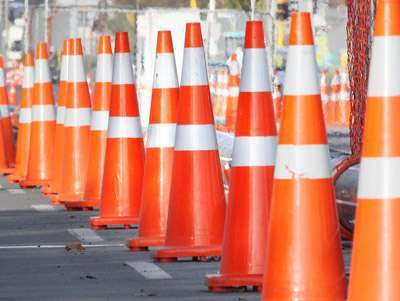
According to a report from MIT News, a paper published in the Journal of Cleaner Production by Massachusetts Institute of Technology (MIT) Concrete Sustainability Hub (CSHub) researchers—Arghavan Louhghalam and Mehdi Akbarian, plus CSHub faculty director Professor Franz-Josef Ulm—offers a way to reduce emissions on roadways by using data to identify specific pavement sections where improvements will have the greatest impact.
The data-driven method indicates that maximum CO2 emissions reduction can be accomplished with a minimum amount of road maintenance.
The researchers studied over 5,000 lane-miles of Virginia’s interstate highway system. “We found that the maintenance of just a few lane miles allows for significant performance improvement, along with lowered environmental impact, across the entire network,” Louhghalam, the paper’s lead author, told MIT News. “Maintaining just 1.5 percent of the roadway network would lead to a reduction of 10 percent in greenhouse gas emissions statewide.”
According to the report, CSHub models recreate the interaction between vehicle wheels and pavement, allowing researchers to study how vehicles react with varying road conditions, pavement properties, traffic loads and climatic conditions. The pavement vehicle interaction (PVI) models are then entered into several databases used by transportation agencies where the results can be scaled up and applied to state or national sustainability goals, providing a way to reduce greenhouse gas emissions through maintenance at the network scale.
“The quantitative approach is less subjective than qualitative methods, and it’s easy to use,” Louhghalam told MIT News. “Decision makers can take more factors into account and make smart choices that are economically and also environmentally optimal.”
According to the report, study results showed deflection-induced PVI (pavement stiffness) to be a major contributor to excess fuel consumption for trucks, and roughness-induced PVI (uneven road surfaces) to have a bigger impact on passenger vehicles.
“There is huge potential to improve efficiency and lower environmental impact through better design and maintenance of roadways,” Ulm told MIT News. “This work supports one of our major goals, which is to aid decision makers, including engineers and politicians, in thinking about infrastructure as part of the solution in a carbon-constrained environment.”













